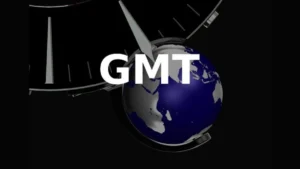Coordinated Universal Time (UTC) is the world’s main time standard used to keep clocks and time the same everywhere. It helps countries across the globe stay on a common time. UTC does not change with seasons and is based on very accurate atomic clocks. This time system is used in internet services, airlines, space stations and many other important areas around the world.
Full Form of UTC
The full form of UTC is Coordinated Universal Time. Some people also say Universal Time Coordinated, but the correct and accepted term is “Coordinated Universal Time.”
What is UTC?
UTC stands for Coordinated Universal Time. It is the main time standard used to keep clocks the same all around the world. Unlike local time zone, UTC does not change with seasons (no Daylight Saving Time). It is always the same and other time zones are calculated by adding or substracting hours from it. For example, New Delhi is 5 hours and 30 minutes ahead of UTC.
History of UTC
Before UTC, there was UT (Universal Time), which used the Earth’s rotation to measure time. In 1884, during the International Meridian Conference, it was decided to use GMT (Greenwich Mean Time) as the standard.
GMT is based on the Prime Meridian (0º longitude), which passes through Greenwich, London.
In 1960, a new system was introduced called UTC (Coordinated Universal Time) by the International Radio Consultative Committee). It was officially adopted in 1967. This system uses very accurate atomic clocks and is adjusted to match the Earth’s rotation using leap seconds.
How Does UTC Work?
UTC divides time using the Gregorian calendar and breaks each day into:
- 24 hours
- 60 minutes per hour
- 60 seconds per minute
However, because the Earth’s rotation is not always perfect, sometimes a minute may have 59 or 61 seconds. These special seconds are called leap seconds. Leap seconds are added or removed to keep UTC in sync with the Earth’s time.
Leap Seconds and Atomic Time
Since 1972, UTC has been based on atomic time (called TAI- International Atomic Time). One atomic second is the time taken by a cesium atom to vibrate a certain number of time.
Sometimes, leap seconds are added to adjust for the Earth’s uneven rotation. These leap seconds usually happen at the end of June or December, and they are announced in advance.
The difference between UT (Universal Time) and UTC is called DUT1, and it is always kept between -0.9 to +0.9 seconds.
Why UTC is Important?
UTC is used in many areas to make sure time is correct and the same everywhere:
- Internet and computers use UTC to synchronize clocks using Network Time Protocol (NTP).
- Air traffic control and weather forecasting use UTC to avoid confusion between different countries.
- The International Space Station (ISS) also uses UTC.
- Radio services use UTC to schedule shows that can be heard in different parts of the world.
Time Zones Based on UTC
Time zones around the world are written as UTC+ or UTC- followed by the number of hours. For examples:
- UTC-12 is the westernmost time zone (12 hours behind UTC)
- UTC+14 is the easternmost time zone (14 hours ahead of UTC)
In 1995, Kiribati, an island nation, changed its time zone from UTC-10 to UTC+14 to stay on the same day across the country.
Problems and the Future of UTC
Due to climate change and human activities, the Earth’s rotation is slowing down. This means we may need to add more leap seconds in the future. By the end of the 21st century, we may need to add a leap second every 250 days.
There is also a chance that the Earth might spin faster someday. If that happens, we might need to remove seconds, which is called a negative leap second. This has never happened so far but may be required in the 22nd century.



 GMT Full Form: Know Its Meaning, Formati...
GMT Full Form: Know Its Meaning, Formati...
 DNA Full Form: Know Its Meaning, Structu...
DNA Full Form: Know Its Meaning, Structu...
 What is the Full Form of FBI? Know Every...
What is the Full Form of FBI? Know Every...







